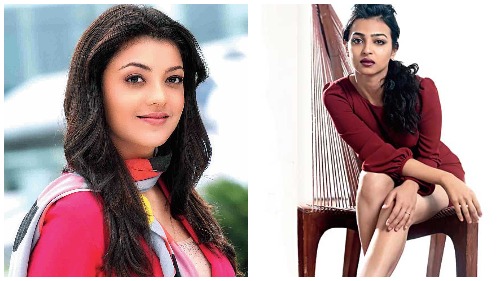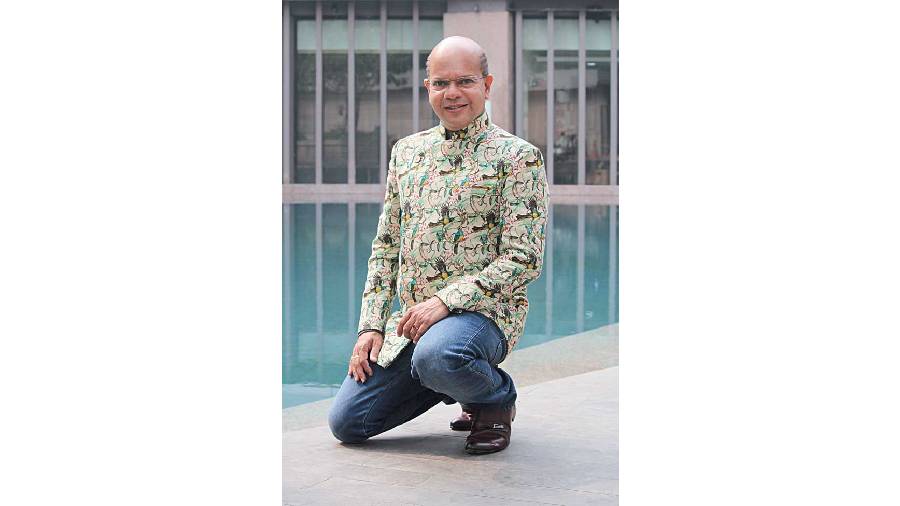Celebrated dancer Sudarshan Chakravorty, who is the founder-director of Sapphire Creations Dance Company, has made his Bollywood debut as a choreographer. In a candid chat with The Telegraph, we got to know about the man, his craft and what lies ahead.
Tell us about your journey from stage to films...
I have been a performer and a choreographer for stage performances for nearly three decades and have been catalytic to create a unique organic physical vocabulary of contemporary dance in this part of India. It’s been an interesting journey to use dance as a vehicle of social consciousness using various themes such as gender, sexuality, ecology, polity and consumerism over the years, stirring the comfort of existing modern dance forms practised in the region.
My approach to dance and my narratives made my work quite conspicuous and attracted the attention of many young Tollywood directors. So I started to work with Srijit Mukherji, Mainak Bhaumik, Anik Datta, Pratim D. Gupta, Arindam Sil and others who used my dance idiom as an extension of the cinematic experience to tell their stories on screen. I choreographed the dance sequence with a tree in Nirbaak by Sushmita Sen and reimagined the Ramayana sequences in Take One with Swastika Mukherjee to name a few that left an impression of my radical style in Bengali cinema.
This transition from stage to film choreography was not planned or intentional or pushed but was gradual and fluid as the directors wanted an alternative movement orientation to be intrinsically integrated with the films in a way where the dance itself becomes a character and not just for the purpose of titillation or romance.
Over the years I was also offered to choreograph ‘commercial’ item numbers and romantic love songs and even made appearances myself, like Aschorjyo Prodeep by Anik Datta, Charuulata 2011 by Agnidev Chatterjee and Mukhomukhi by Kamaleswar Mukherjee. I choreographed 16 movies in Tollywood and now I am making my Bollywood debut with back-to-back films!
How did the Bolly projects come about?
My work started with Bollywood heroines in TV commercials when I choreographed Karisma Kapoor and Mahima Chaudhry. It’s seen as the next level if you get an opportunity to choreograph in Bollywood films but for that you need to be based in Mumbai. Thankfully, in the past few years, we saw many such movies being made or located in cities as that particular cityscape itself became a part of the movies and Calcutta has always been a favourite of the Bolly brigade. I got an opportunity to choreograph a street sequence seen as a surreal experience by the protagonist Ayushmann Khurrana in Meri Pyaari Bindu but that part was not kept in the movie.
You are involved with two Bollywood films at the moment
My debut in Bollywood will be in Mrs Undercover, which is being frontlined by Radhika Apte. I choreographed and shot it in March. The song is part of a climactic sequence set to the mantra of Navadurga where I used 12 boys with Radhika, drawing from Kalaripayattu, a martial art form of Kerala. Draped in red and gold, the piece was an ode to the Mother Goddess, emphasising the power of fertility, where Radhika personifies the Goddess with her strong postures and mudras.
I am also doing Uma with Kajal Aggarwal. Back-to-back Bollywood was something I was not expecting and that too in a year when our work itself seemed to come to a standstill due to the pandemic. But when the second wave was gradually fading and we were returning to normal mode, a call came from producer Avishek Ghosh with whom I worked earlier in a Bengali movie. He expressed his desire to engage me as a choreographer for the film that is being directed by Tathagata Singha. The film is about family relationships and I choreographed two important sequences and one of them is being led by the protagonist (Kajal).
This is completely opposite of what I did in Mrs Undercover, which was sombre, ritualistic and traditional. Here the song is funny and the comic timing of the artiste will be the ultimate quotient and as far as I saw it happening and being delivered, I am sure the audience will love the expressions and moves of Kajal. The dance is funky and casual with movements drawn from day-to-day life but punctuated with vibrant moves.
How was your experience working with Bolly actresses?
In most cases, the actresses are humble and sweet, right from Sushmita Sen in Nirbaak who admitted immediately after watching the rehearsal that she would need a particular kind of training and specific orientation and that she would give her best. This sense of surrender shows the talent and humility of a professional artiste who is respectful towards her craft and also the people in the industry. So was the case for both Radhika and Kajal who showed immense reverence to my process, structure and content.

Sudarshan is working with Radhika Apte (Right) in Mrs Undercover and with Kajal Aggarwal in Uma
What do you think of Radhika and Kajal as dancers?
Radhika only got to know her moves on the set. She was meticulous and a super fast learner who imbibed all the postures quite easily. She had prior training in dance, which was apparent in her body language. Usually we see if someone is adept in traditional styles, the western style is a bit weak but for Radhika she was doing both with ease.
I have been teaching for more than 30 years and so certain nuances I read immediately when I look at a student. I am quite a taskmaster as everyone knows and so my heart swells with joy when I find that energy in my student. I really found a disciplined and hardworking student in Kajal who not only understands her responsibility but also slogs hard to achieve that perfection. We rehearsed for almost four hours without break and each time she wanted to excel. She was serious and diligent in her training sessions. She not only was observing my expressions carefully but continuously practising to get them perfect and was ready to do long shots without cuts.
How are the working styles in Tollywood and Bollywood different?
For me it’s almost the same in terms of my involvement but the little difference that I feel is that here in Calcutta we seem to refrain from signing contracts or even e-mail communication, which at times makes things a little ambiguous while all Bollywood projects I did had a written contract with timelines and expectations. For me, Tollywood is a little ghoroa in the sense when you meet directors and producers at social events who say, ‘Ektu ota kore debe?’ (Will you do that for me?/for my film?), which is sweet but at times dilutes the professionalism and a little emphasis on written agreements is taken with a pinch of salt. Since I have been working mostly for stage and mostly international projects, where every communication is in writing, initially I was quite nervous in accepting projects on verbal confirmation but later I found my comfort and also discovered that Tollywood is eventually a small family with camaraderie between those involved in the industry, whether they are actors, designers, choreographers, production team and the likes.
At times I do not feel we are doing a Bollywood film when the whole unit, including people from Mumbai, are extremely comfortable with the Bengali language and also at times most of them speak in Bengali, and those who do not speak the language end up understanding it.
Sapphire turns 29 this month. Your thoughts...
The month of August is really important for me as it’s my birth month and also of my dance company Sapphire Creations, which turns 29 on the 12th. It’s been nearly three decades since I started Sapphire while still in college and I never expected that I or Sapphire would make a mark in dance. We performed in more than 22 countries, representing India over the years. We look back to our past moving forward, enriched by what we learnt and looking further to imbibe more to reach the next level of excellence, making Sapphire a melting pot for dancers, artistes, musicians, theatre persons and others from all over the world. We celebrate through an event we call Tranz in August, bringing together past and present performers of Sapphire, making it a trans-generational performance.
Any film projects coming up?
My next Bengali film will be Shrimati, directed by Arjunn Dutta, where I do a cameo. Talks are on to choreograph Payel Sarkar for a film by Sudeshna Roy and Rana da (Abhijit Guha) next month.
